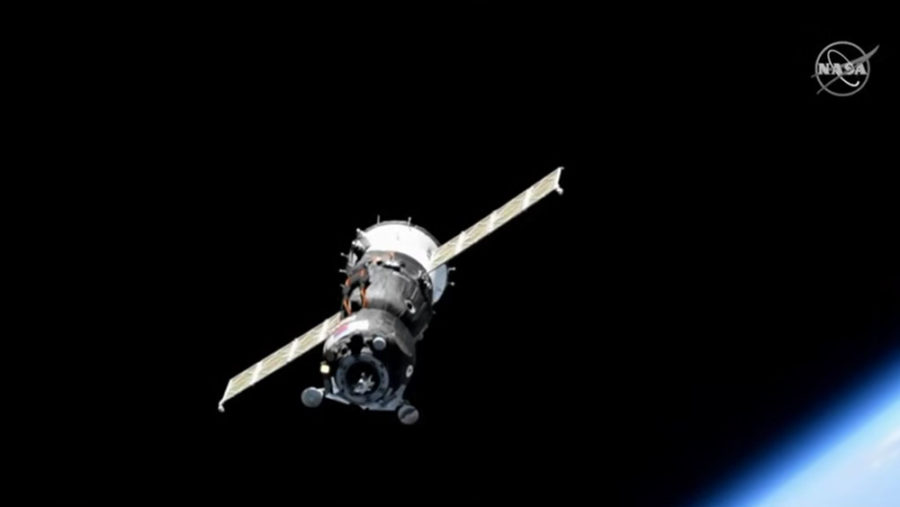Soyuz MS-14 Completes Its Mission
On Sept 6, Soyuz MS-14 landed in Kazakhstan after a 15-day unmanned test flight to the International Space Station and back.
As the Russian Space Agency Roscosmos continues to prepare for the final Soyuz-FG rocket launch on Soyuz MS-15, they have already started to look at the future for the Soyuz rocket program. The replacement for the Soyuz-FG rocket is the Soyuz-2 series. After Soyuz MS-15, all manned Soyuz flights will be on the Soyuz 2.1a booster.
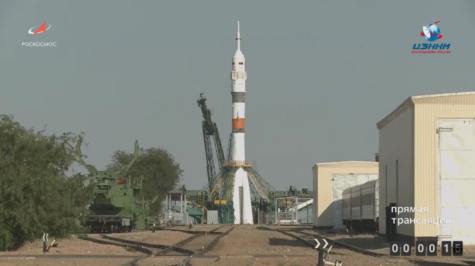
The Soyuz rocket series has a long and historic series. The first variant was the cold war-era R-7A Semyorka which was an IBCM for the Soviets. The R-7 was then derived into multiple variants including the Soyuz-U, Soyuz-FG, and the newer Soyuz 2.1a. Since 1961, all Soviet, and now Russian manned flights have launched on Soyuz rockets.
Rather confusingly, both the Soyuz rocket and the Soyuz spacecraft are called by the name “Soyuz” in russian. In the Russian language, the “Soyuz” means union.
On Aug 22, Soyuz MS-14 launched from site 31/6 at the Baikonur Cosmodrome in Kazakhstan. Unlike other Soyuz missions, this mission was unmanned, a first for a Soyuz spacecraft in 33 years and the first unmanned one to travel to the International Space Station (ISS). Soyuz MS-14 was also the 143rd flight of the Soyuz series of spacecraft.
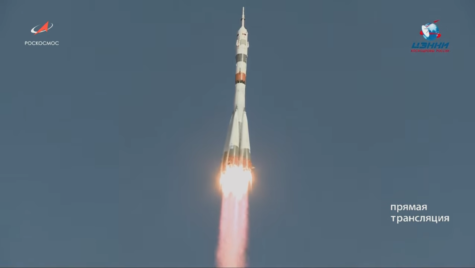
The Soyuz 2.1a rocket upgrade is a major one for the R-7 legacy booster. The 2.1a model switches the analog guidance systems on the Soyuz-FG to a digital system. Additionally, the Soyuz 2.1a has the ability to roll on its own to its launch azimuth or heading during liftoff. Previous R-7 variants like the Soyuz-FG has to be rotated on the launch pad to the launch azimuth prior to liftoff.
However, this roll during liftoff interferes with the Soyuz launch escape system due to the roll motion. Roscosmos used the MS-14 test flight to test a new software patch to deal with the potential problem.
Additionally, Roscosmos tested a new upgrade to the Soyuz spacecraft navigation system and a new control system for the Descent module. A Soyuz spacecraft consists of an Orbital module, a Decent module, and the Instrument module. The Descent module is the only part that returns to earth and consists of the crew. These upgrades are in anticipation of the Soyuz GVK which is in development.
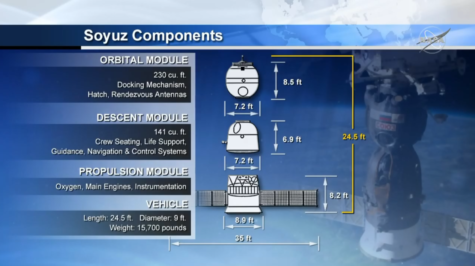
The Soyuz GVK is a cargo spacecraft what will have a decent module capable of returning cargo to earth. The current Soyuz cargo spacecraft the Progress, burns up in the earth’s atmosphere after departure from the ISS.
This is not the first flight of a Soyuz-2 rocket series, the first one occurred in 2004. The Soyuz-2 series consists of the Soyuz 2.1a, 2.1b and the 2.1v rockets. The Soyuz 2.1v rocket looks very different from the other types of versions due to the fact that it does not have the strap on boosters as stage one.
The Soyuz 2.1v rocket also has a single NK-33 engine instead of multiple RD-107A engines on the 2.1a for example. The NK-33 the Soyuz 2.1v rocket uses is the same engine as on the failed N-1 moon rocket.
During launch, the Soyuz 2.1a rocket and escape system performed properly. After launch the Soyuz MS-14 capsule also operated correctly. The spacecraft then spent the next few days raising its orbit closer to that of the ISS.
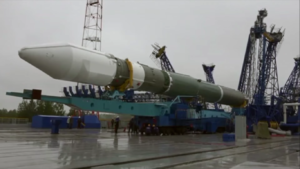
On Aug 24, the spacecraft prepared to dock to the Poisk module on the Russian segment of the ISS. During the approach to Poisk, the Soyuz began to maneuver erratically. This was due to the fact that the KURS system on Poisk failed to lock on to the Soyuz. This failure of the KURS system was discovered to be related to the KURS signal amplifier on Poisk, which broke.
After the Astronauts and Cosmonauts lost sight of the Soyuz MS-14, ISS Expedition 60 commander Aleksey Ovchinin of Roscosmos sent the abort command to the Soyuz. As designed, the Soyuz backed away from the station’s Keep Out Sphere. Unlike other unmanned Soyuz spacecraft variants like the Progress cargo spacecraft, Soyuz MS-14 does not have the backup manual docking system called TORU.
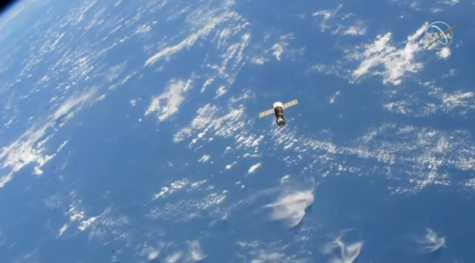
In order to allow for the Soyuz MS-14 spacecraft to dock with the ISS, Roscosmos decided they would need to relocate Soyuz MS-13. Between 11pm on Aug 25, and 12am on Aug 26, Aleksandr Skvortsov (Roscosmos), Luca Parmitano (ESA), and Andrew Morgan (NASA) climbed into their Soyuz MS-13 spacecraft and undocked from the aft docking port on Zvezda, and manually docked to the port on Poisk.
Cosmonaut Aleksandr Skvortsov had to manually dock his spacecraft to Poisk due to the KURS system not working on Poisk. This was the first relocation by a Soyuz capsule on the ISS since Soyuz TMA-16M in 2015.
On Aug 27, Soyuz MS-14 approached the ISS from the rear. Using the KURS system, it autonomously docked to the aft docking port on Zvezda successfully.
Even though the spacecraft was unmanned, Roscosmos used the mission to send up supplies and scientific experiments which could not otherwise launch on a Progress spacecraft. On board the Soyuz MS-14 was the Russian robot FEDOR. The humanoid robot was developed by Roscosmos as a demonstration experiment.
FEDOR was originally developed by the Ministry of Emergency Situations in Russia. The development of the robot was originally meant for emergency rescue operations.
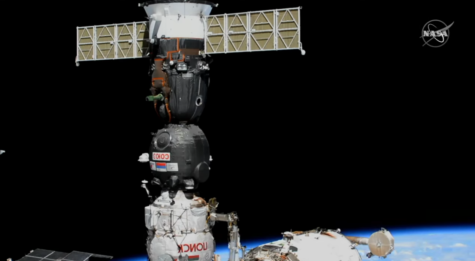
On board the ISS, FEDOR accomplished a series of experimental tasks. Some of the tasks consisted of repairing cables inside the station.
On Sept 6, Soyuz MS-14 unlocked from Zvezda after 10 days docked to the ISS. The spacecraft then slowly departed the Keep Out Sphere around the ISS.
After moving away from they ISS, the Soyuz orbited the earth a few times, lowering its orbit. After the deorbit burn, both the Orbital and Instrument modules separated from the Soyuz descent module in quick fashion.
Then, the Descent module reoriented itself for reentry into the earth’s atmosphere. After the searing heat of reentry, the spacecraft slowly parachuted to the ground. Soyuz MS-14 landed near the city of Zhezkazgan, Kazakhstan.
The final flight of the Soyuz-FG rocket will be for the Soyuz MS-15 mission to the ISS. Currently the launch is scheduled for Sept 25, 2019. The mission will also be the last flight from Site 1/5 or called “Gagarin’s Start,” for a long period of time. Originally, Roscosmos was going to permanently shut down Site 1/5, but more funding has allowed the corporation to modify the pad for Soyuz 2.1a rocket operations. However, according to RussianSpaceWeb.com, the pad modifications would be funded by interests from United Arab Emirates (UAE) and is subject to changes in plans.
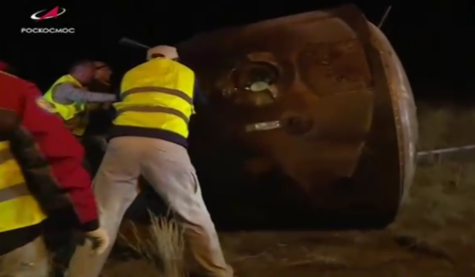
Soyuz MS-15 will consist of commander Oleg Skripochka (Roscosmos), flight engineer Jessica Meir (NASA), and spaceflight participant Hazza Al Mansouri of the UAE. Al Mansouri will be the first man in space from the UAE.
The Successful flight test of the Soyuz capsule on a Soyuz 2.1a rocket now clears the way for future manned flights of the Soyuz 2.1a. The first manned Soyuz flight on a Soyuz 2.1a rocket will be the Soyuz MS-16 mission to the ISS. Soyuz MS-16 is currently scheduled for March of 2020.


